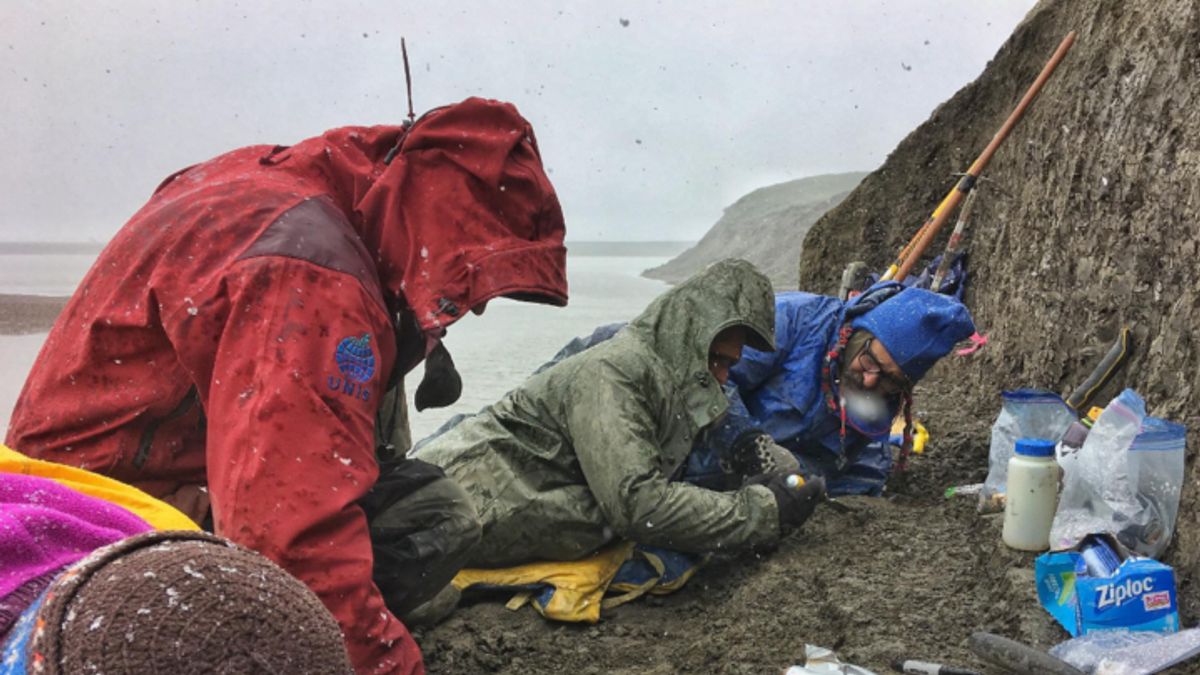JAKARTA - Fossils of a tiny baby dinosaur found in northern Alaska offer compelling evidence of a prehistoric, year-round Arctic and possibly warm-blooded creature, according to a study published June 24 in the journal 'Current Biology'.
The fossils come from at least seven types of dinosaurs that have just hatched or are still in their eggs, aged about 70 million years ago. Researchers have never found evidence of a dinosaur nest so far north, said lead author Pat Druckenmiller and director of the University of Alaska Northern Museums.
This finding helps to distort assumptions about dinosaurs in the past, if they were classified as giant cold-blooded reptiles.
"If they reproduce, then they overwinter there. If they overwinter there, they have to deal with conditions we don't normally associate with dinosaurs, like freezing and snow conditions," Druckenmiller said, as quoted by Reuters on June 25.

To survive the dark Arctic winter, the dinosaurs couldn't have basked in the sun to warm their bodies, as lizards did, he said.
"At least this group is endothermic according to him, using the term for the ability of animals to warm their bodies through internal functions. Druckenmiller explains, they have a warm-blooded degree.
The discovery site is a escarpment on the Colville River on Alaska's North Slope, at latitude 70 and about 250 miles (400 km) north of the Arctic Circle. In the Cretaceous period, when North America was positioned differently, it was even further north, at latitudes 80 or 85, he said.
The region was much warmer then than the North Slope of Alaska now but hardly tropical. From the remains of ancient plants, scientists calculated an average annual temperature of around 6 degrees Celsius, similar to Juneau, Alaska, which means a winter below freezing with snow, Druckenmiller said.
Druckenmiller explained, Alaska's Northern Slope is experiencing two months of total winter darkness now. Meanwhile, during the Cretaceous period, the area experienced total darkness for up to four months of the year.

Finding small bones and teeth, some the size of a pinhead, is very difficult, Druckenmiller said. They were identified through microscopic examination after being screened several times from sediment collected in expeditions over decades, he continued.
"I liken it to panning for gold. The process is very slow," he said describing the process researchers had to go through.
The discovery site, called the Prince Creek Formation, has proven important to modern understanding of ancient creatures.
The first dinosaur discovery was made there in the 1960s by a petroleum geologist. Subsequent expeditions discovered previously unknown dinosaur species. Over time, evidence of year-round occupation of the Arctic has increased.
In the same formation, other scientists discovered the jawbones of a baby dromaeosaurid, which was detailed in a study published last year in the journal 'PLOS ONE'. The flesh-eating dinosaur was the size of a small puppy and was unable to migrate long distances, said co-author Tony Fiorillo, a Southern Methodist University paleontologist.
"The new study of nesting dinosaurs reinforces a growing awareness that dinosaurs lived full time in the Arctic and thus were not cold-blooded," Fiorillo said.
"This new study expands the conversation about dinosaurs throughout the year in the Arctic. It doesn't create a conversation," concluded Fiorillo.
The English, Chinese, Japanese, Arabic, and French versions are automatically generated by the AI. So there may still be inaccuracies in translating, please always see Indonesian as our main language. (system supported by DigitalSiber.id)













